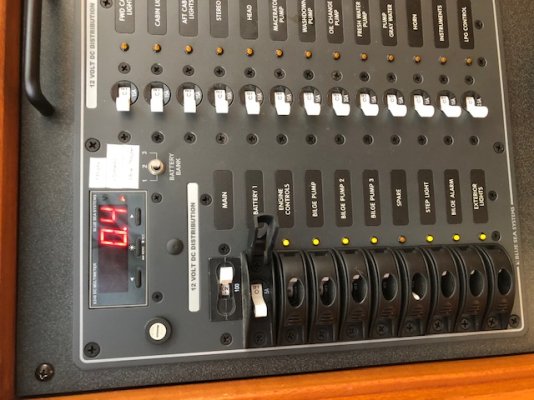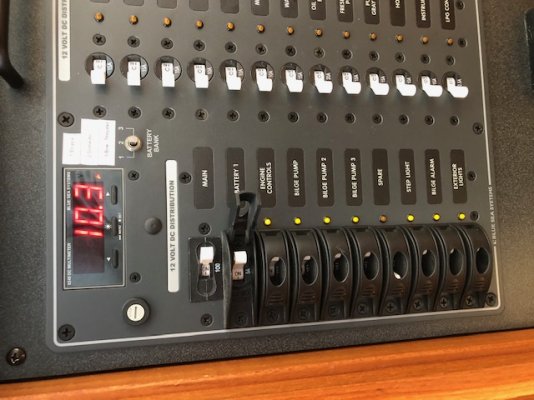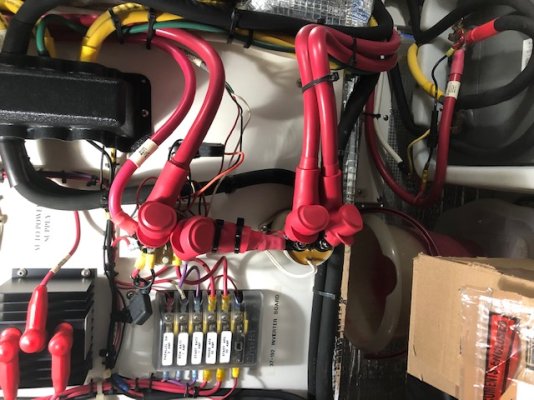steved59
Member
Greetings from the UK, hope you are all managing to keep well in these torrid times.
Please see a couple of photos of the 12V DC panel on my Nordic Tug 37, the 2 readings are the amps being drawn, one with the Battery switch off (0.4amps) and the second showing 10.3. The 10.3 amp picture was taken just before it trips out as the switch is only rated at 5 amp.
So my learned friends what is causing the amps to surge? Engine start has been working faultlessly until this problem and no other electrical works have taken place.
Thanks and stay safe


Please see a couple of photos of the 12V DC panel on my Nordic Tug 37, the 2 readings are the amps being drawn, one with the Battery switch off (0.4amps) and the second showing 10.3. The 10.3 amp picture was taken just before it trips out as the switch is only rated at 5 amp.
So my learned friends what is causing the amps to surge? Engine start has been working faultlessly until this problem and no other electrical works have taken place.
Thanks and stay safe






